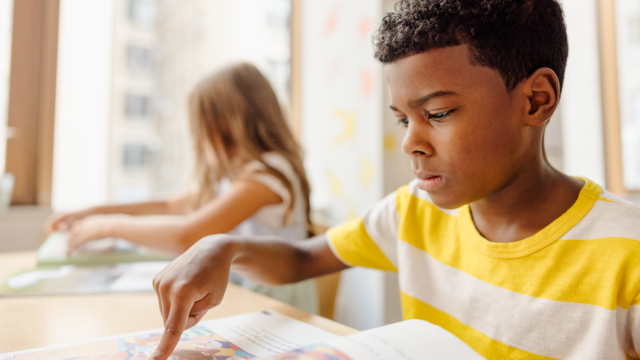
Building a classroom library can be a daunting task, but it’s an integral part of your classroom—and one that should always be growing and changing. This is the part of your classroom that will invite and encourage young readers, perhaps even boosting their confidence in their literary skills. Does it have to be perfect? No. But there are some guidelines to follow when creating your library.
- Don’t try to build it all in one day: Rome wasn’t built in a day, and neither are classroom libraries.
- Plan it out and enlist help: Ask your school’s reading specialist or facilitator for guidance. Walk around and look at other teachers’ classroom libraries. Talk to veteran teachers to see why their library works in their classroom.
- Be flexible: Use what you have and see what works in your classroom. Change what you feel isn’t working well. Great teachers are flexible and do what is best for their students. Only you know your students and can meet them where they are in reading.
Now to the real fun: creating your library! Here’s how you can get started.
Finding Books for Your Elementary or Middle School Classroom Library
Books. You need many, many books. You need books on grade level, two levels below your grade level, and two levels above your grade level. You need a variety of genres. You need fiction, nonfiction, magazines, biographies, poetry, multicultural books, holiday books, fairy tales, and books kids want to read! My students always loved my “star” books, which were my series books and books based on movies and toy characters. Think about what kids like—their favorite authors, favorite toys, favorite movies.
Where do teachers get all their books? From many different places! Some districts support their teachers’ classroom libraries and will order books for them. If your school doesn’t do that, there are other ways to get books, but you have to put in the work.
During my first year of teaching, I borrowed books from our school and public libraries—so many that I went every month, and I needed a cart! I also went to book warehouses and found great deals, sometimes even free books! I searched garage sales and online on Craigslist and the Facebook Marketplace. You can ask for donations from your students’ parents, friends, family—even the community. You can send home book orders and earn points for free books. And the best deal of all: find a retiring teacher. When I stopped teaching, I sold a huge number of my books for $1 apiece. I sold 300 books and still had a generous amount left that I kept for my own children.
But teachers, hear me when I say: I did not have hundreds of books in one day. It took years to cultivate a library that large. While all my students had a classroom library, it looked different over the years, but they all had access to a library in our classroom with books just right for them!
Organizing Your Library
Once you have some books to start with, follow these steps:
- Put them on low shelves so your students can easily access them.
- Organize them in bins by level, genre, and so on. Label them in colors and ways that enable students to easily and independently navigate your classroom library.
- Write or stamp your name in your books.
- Let your students “shop” and independently pick what books they would like to read.
When it’s all done, enjoy watching your classroom library inspire a love for reading in your students.
***
This blog, originally published as a chapter in an eBook in 2019, has been updated for 2021.













